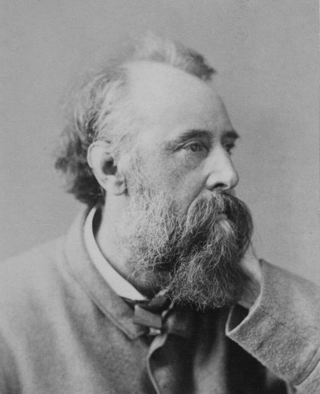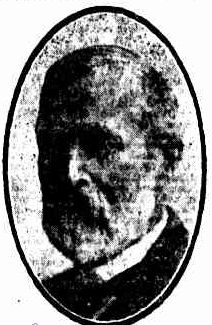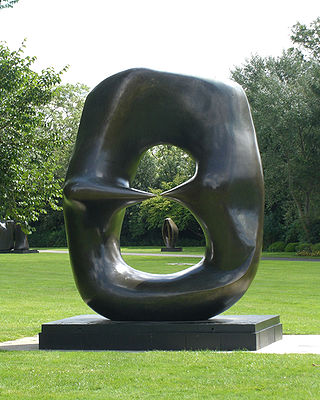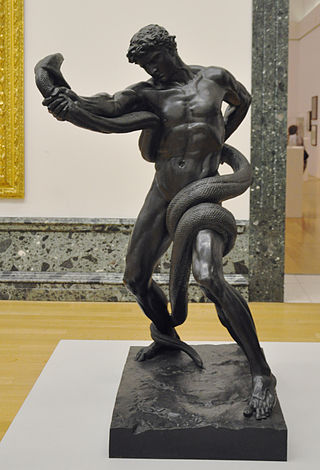
Sir Francis Leggatt Chantrey was an English sculptor. He became the leading portrait sculptor in Regency era Britain, producing busts and statues of many notable figures of the time. Chantrey's most notable works include the statues of King George IV ; King George III (Guildhall), and George Washington. He also executed four monuments to military heroes for St Paul's Cathedral, London. He left the Chantrey Bequest for the purchase of works of art for the nation, which was available from 1878 after the death of his widow.

Sir William Hamo Thornycroft was an English sculptor, responsible for some of London's best-known statues, including the statue of Oliver Cromwell outside the Palace of Westminster. He was a keen student of classical sculpture and was one of the youngest artists to be elected to the Royal Academy, in 1882, the same year the bronze cast of Teucer was purchased for the British nation under the auspices of the Chantrey Bequest.

The Thinker, by Auguste Rodin, is a bronze sculpture situated atop a stone pedestal depicting a nude male figure of heroic size sitting on a rock. He is seen leaning over, his right elbow placed on his left thigh, holding the weight of his chin on the back of his right hand. The pose is one of deep thought and contemplation, and the statue is often used as an image to represent philosophy.

George Frederic Watts was a British painter and sculptor associated with the Symbolist movement. Watts became famous in his lifetime for his allegorical works, such as Hope and Love and Life. These paintings were intended to form part of an epic symbolic cycle called the "House of Life", in which the emotions and aspirations of life would all be represented in a universal symbolic language.

Jacques François Joseph Saly, also known as Jacques Saly, French-born sculptor who worked in France, Italy and Malta. He is commonly associated with his time in Denmark he served as Director of the Royal Danish Academy of Art (1754–71). His most noteworthy work is the equestrian statue Frederik V on Horseback at Amalienborg.

John Henry Foley, often referred to as J. H. Foley, was an Irish sculptor, working in London. He is best known for his statues of Daniel O'Connell for the O'Connell Monument in Dublin, and of Prince Albert for the Albert Memorial in London and for a number of works in India.

Thomas Thornycroft was an English sculptor and engineer.

King and Queen is a bronze sculpture by Henry Moore, designed in 1952. It depicts two figures, one male and one female, seated beside each other on a bench, both facing slightly to the left. It is Moore's only sculpture depicting a single pair of adult figures. Moore's records suggest it was originally known as Two Seated Figures.

The Artist as Hephaestus is a bronze statue by Sir Eduardo Paolozzi, created in 1987. It depicts a standing human figure, a self-portrait of Paolozzi 2.64 metres tall, with the left foot advanced as if walking, holding two pierced objects akin to sieves.

The statue of the Earl Kitchener is an outdoor bronze statue by John Tweed depicting Herbert Kitchener, 1st Earl Kitchener, installed in 1926 and located on the south side of Horse Guards Parade in London, United Kingdom. The sculpture stands on a Portland stone plinth. It became a Grade II listed building in 1970.

James Laurence Watts (1849–1925) was a sculptor in Queensland, Australia. He was one of the pioneer sculptors in Australia and his works appear in many Queensland public buildings and places.
Meridian is a bronze sculpture by British artist Barbara Hepworth. It is an early example of her public commissions, commissioned for State House, a new 16-storey office block constructed at 66–71 High Holborn, London, in the early 1960s. The sculpture was made in 1958–59, and erected in 1960. When the building was demolished in 1992, the sculpture was sold and moved to the Donald M. Kendall Sculpture Gardens in Purchase, New York.

The Offerings of Peace and The Offerings of War are a pair of bronze allegorical equestrian statues by Gilbert Bayes commissioned for the entrance of the Art Gallery of New South Wales. They have been on permanent display since their installation in 1926.

The Thames Ditton Foundry was a foundry in Thames Ditton, Surrey, which operated from 1874 to 1939 and which under various owners produced numerous major statues and monuments as one of the United Kingdom's leading firms of bronze founders.

Oval with Points is a series of enigmatic abstract sculptures by British sculptor Henry Moore, made in plaster and bronze from 1968 to 1970, from a 14-centimetre (5.5 in) maquette in 1968 made in plaster and then cast in bronze, through a 110-centimetre (43 in) working model in 1968–1969 also made plaster and then cast in bronze, to a full-size 332-centimetre (131 in) bronze version cast in 1969.

Horse and Rider is a 1974 bronze equestrian sculpture by Elisabeth Frink. The work was commissioned for a site in Mayfair; another cast is in Winchester. It was described by Frink as "an ageless symbol of man and horse".

An Athlete Wrestling with a Python was the first of three bronze sculptures produced by the British artist Frederic Leighton. Completed in 1877, the sculpture was a departure for Leighton, and heralded the advent of a new movement, New Sculpture, taking a realistic approach to classical models. It has been described as a "sculptural masterpiece" and as "possibly Leighton's greatest contribution to British art". Despite its indebtedness to the Classical tradition, it can be understood as one of the first stirrings of modern sculpture in Britain as well as in Europe. The Athlete was arguably the most influential piece of English sculpture of the 19th century.

Locking Piece is a sculpture by Henry Moore. It comprises two interlocking forms holding a third element between them, on a bronze base. It is usually mounted on a separate plinth. The sculpture was created in 1962–1964, and bronze casts were made in 1964–1967.

An equestrian statue of George Washington by Thomas Ball is installed in Boston's Public Garden, in the U.S. state of Massachusetts.
The Parlanti Foundry was an art bronze foundry located at the Albion Works, 59 Parsons Green Lane in Parsons Green, London, and was in operation from 1895 until 1917.



















